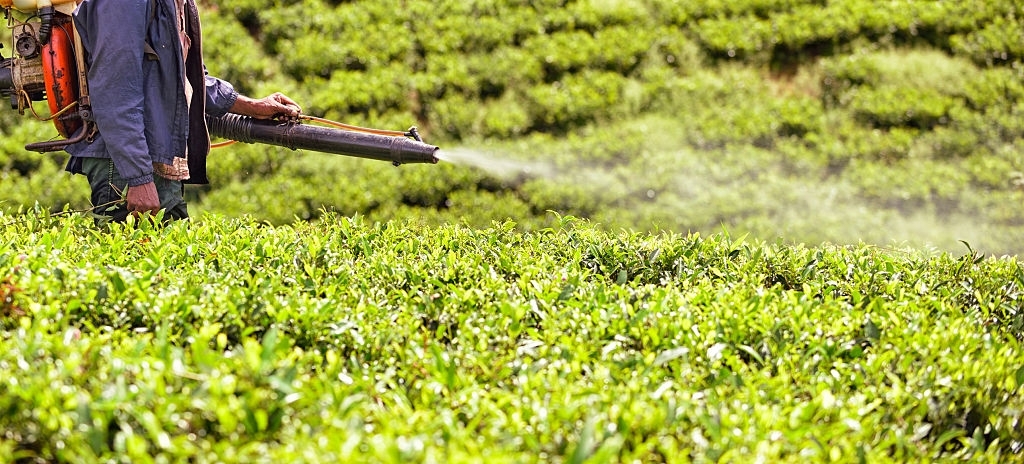Pests and diseases are a major source of financial loss for farmers, regardless of the farming practises. Insects, diseases, and weed pests harm more than 40% of the world’s food supply annually. Despite the usage of nearly 3 million tons of pesticides each year and a variety of non chemical treatments, such as biological management and crop rotation, this loss occurs. As many as 3 billion people are undernourished in the world today if some of this food could be rescued from pests.

Traditional insecticides like carbamates, organophosphates, pyrethroids, and organochlorines were developed to a wide spectrum of traditional insecticides. In recent decades, a reduction in agricultural losses has resulted from their use as insecticides. Stricter rules and restrictions to reduce pesticide use were enacted in response to escalating resistance issues, severe environmental harm caused by pesticides, and public outcry. The pest management industry is always looking for new ways to manage and prevent pests, and new technology and products are always being developed .Get the Best Pest Control Services In San Diego Here.
Pests Like Organisms :
Pests are organisms that compete with or harm crops. Horticultural products are affected by a drop in plant density and a reduction in the plant’s ability to develop and produce, as well as an overall fall in yield or quality. Pesticides are one of the most well-known methods for controlling or removing pests. Pest organisms may suffer physical or biological harm as a result of the chemicals. Insects can ingest pesticides that are sprayed on plants or administered indirectly.
Preharvest and storage losses are caused by pests, which can be prevented and minimized by various strategies for crop protection (postharvest losses). Products, equipment, and practices that farmers can use to protect their crops against pests, disease, and weeds are all part of crop protection. Weeds rob crops of their access to sunlight, nutrients, and moisture. Insects and illnesses can affect food production.
Every day, farmers throughout the world make various decisions on how to best secure their crops through the use of diverse approaches such as biological management, microbial pesticides, pest behavior, genetic manipulation, and insect population immunization. Fortunately, contemporary agricultural advancements have made a range of alternatives possible.
Biorational Materials :
Organic pesticide treatments or rational pesticides contain pheromones (a chemical substance emitted by an animal into the environment) or living microorganisms, which have a minimal environmental impact and are safe for humans and animals.
Biorational insecticides with a Bacillus Thuringiensis (Bt) basis are the most effective. It is possible to utilize Biorational insecticides instead of chemical competitors in export markets where food residues are a major problem and ecologically sensitive places.
It is possible to boost the effectiveness of pesticides against ants using a “pheromone-assisted approach.” Insecticide and pheromones work together to keep ants away from the insecticide’s trails and nests. As a result, it limits the contact of pesticides with the environment while increasing the exposure of ants to the insecticide for elimination.
Growth Regulators for Insects :
It is possible to control the population of hazardous insects by using insect growth regulators (IGR) synthetic hormones as pesticides. Insect growth regulators (IGRs) interfere with the molting process, preventing an insect from maturing. Insect growth regulators (IGRs) are frequently combined with other insecticides to eliminate adult insects. In general, IGRs are less harmful to people.
Heat Treatments that aren’t Harmful :
Insects can be eliminated using heat, a low-toxic technology that is more environmentally friendly and effective than harsh chemicals. Entotherm from Rentokil is a brand-new treatment for bedbugs and cockroaches. The Entotherm system’s heat kills insects from the inside out by dehydrating them and damaging their vital bodily functions rather than relying on sprays. Additionally, the heat effectively kills all stages of insects?egg, larvae, pupa, and adult?without requiring to exceed 56?60?C, which is high enough to kill the pests swiftly.
Controlling pests with CRISPR :
Using CRISPR gene editing, insects can alter their fertility and sex determination. Using CRISPR technology, researchers have developed a new effective control system that is safe, self-limiting, and scalable for a single species. A wide range of insect pests and disease vectors could benefit from its development and application. This technology is safe to use in the field to inhibit and even eradicate target species.
Green Products of the Second Generation :
In recent years, public health has been a key concern when it comes to green products. Green products are becoming increasingly popular, and the emphasis is changing from environmental protection to environmental protection. New eco-friendly items of the second generation are appearing today. Better ingredients, higher performance, and fewer drawbacks will be found in these second-generation green solutions.
There may be an unpleasant scent associated with a first-generation insecticide containing essential plant oils. However, the second-generation pesticide contains varying proportions of the original components or other compounds, resulting in a less toxic odor but yet providing the same level of protection.
Insect Contraception :
Pest management has relied on birth control methods for the past few years to keep pigeon populations in check. Shortly, rodent birth control may efficiently reduce prolific breeders such as mice and rats without severely influencing numerous non-target animals. Rodent birth control is coming soon, so keep an eye out for it.
Variety of Fly Baits are Available :
Flies gather around food storage areas, and fly bait stickers can be used to attract them. As soon as a fly touches the sticker, it dies in a matter of minutes. So, you need to apply that for good results.
Conclusions:
Toxicity, pest resistance, and pest re-emergence are some of the problems associated with pesticide use in the conventional sense. As a result, they pose a threat to both the environment and human health. You need to read the above-given details carefully so that you can get proper information. Organic farming and plant protection can benefit from pheromone traps and other cutting-edge technology that can help reduce the use of pesticides in food. As a result, it is imperative to use new technologies that produce high-quality food and increase income.
AUTHOR BIO
Name:- Jordan Everett (Tree & Plant Healthcare Specialist)
Jordan Everett is a tree and plant healthcare specialist at Tree Doctor. He is highly experienced in diagnosing and treating numerous tree and plant species. Correct identification of the tree healthcare problem, proper care, and regular monitoring is of utmost importance to let your tree grow stress-free and stay healthy.
So, to make readers aware of tree health dangers, requirements, and management, he has given extensive information on invisible signs of health hazards to trees, plants, and shrubs, secrets of tree preservation, tree & plant healthcare tips, and soil & root care treatment through his blogs. Read our recent post related to tree and plant health problems, in-depth assessment, unique treatment solutions, prevention, tips to improve drought tolerance, how to increase tree and plant longevity, stabilize older and declining trees in San Diego.










